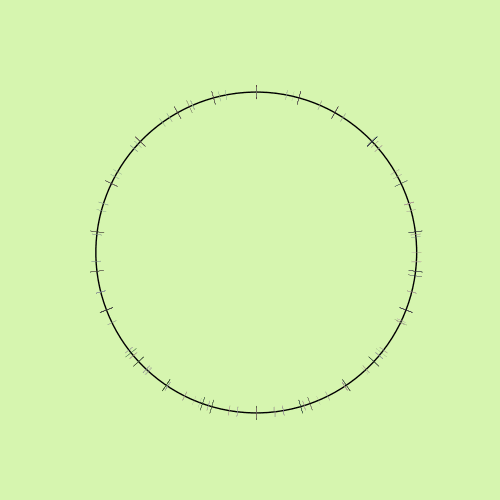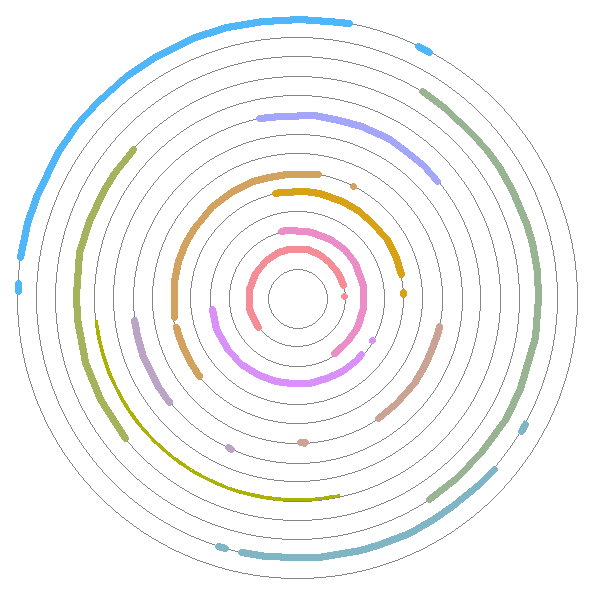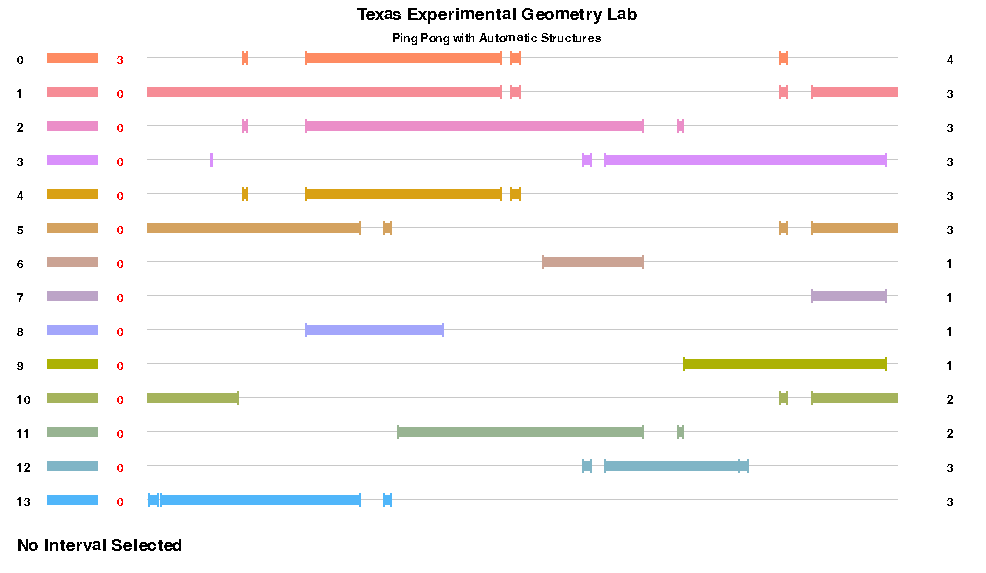Ping Pong III: The Patching Algorithm
7 min read
TLDR
(click to show/hide)
In the final semester of iterating on the ping-pong lemma algorithm with the Texas Experimental Geometry Lab,
the team came up with a new algorithm that let us extend the range of groups it could handle. We also tie up a
few loose ends in a final writeup and lay out some questions for future individuals that might pick up this work.
Back in Spring of 2021, I started working in the
Texas Experimental Geometry Lab
(TXGL) at UT Austin. I had worked on research projects before through
REUs over the summer, but this was my first experience in a group
focused on pure math. We produced a few results over the three
semesters I worked with the group and ended our project in the Summer
of 2022 when several of us graduated.
Although we never completed a publication-worthy article, I'd still
like to go back and share some of the cool problems I worked on that
last semester to finish up my series of articles you can read here:
Assuming you're caught up on the first two iterations of the project,
I'll start by discussing a visual problem we came across while
debugging the algorithm for more complex groups.
Better RP1 Visualization
As you'll recall, visualizations of the RP1 intervals for
small-ordered cyclic groups were fairly simple; there were only a few
intervals and they didn't necessarily overlap very much. However, as
we moved onto the (3,4,4) triangle group, we found that making any
sort of meaningful image would be more difficult since it would
require at least 13 different intervals all overlapping one another.
This would especially be an issue for even more complex groups we had
in our sights.
A hard to see representation of a (3,4,4) triangle group
(13 disconnected, overlapping intervals with similar colors)
Luckily, I had just spent my winter break working a lot with color
science. I created a tool that I describe in this article on
Color Spaces and Even Color Spacing
which would be able to generate 'perceptually distinct' sets of colors
we could use instead of the random colors we had been assigning to
intervals previously.
The team also came up with a better way for viewing individual
intervals by splitting them onto separate instances of RP1 (so they
wouldn't overlap on the same circle) and then used a line
representation of RP1 to stack all of them together nicely. (We
briefly played with putting the intervals on concentric copies of RP1,
but this made it difficult to see which ones did in fact overlap).
An early test with each disconnected interval displayed on separate
concentric copies of RP1
Cleaner representation of a (3,4,4) triangle group with distinct
colors and parallel copies of RP1
Above is the final visualization tool we landed on to display more
complex groups. In the application itself, you can click on the
colored bars on the left to highlight where the images of other
intervals end up inside of the selected interval under the
corresponding action in the group. The number of non-covered images is
shown in red on the left and the number of components in each
disconnected interval is shown on the right.
This tool was extremely helpful for debugging and focusing solely on
the implementation of our new algorithm. I encourage you to clone the
github repo
and try it out for yourself by running the main.py file.
The Patching Algorithm
We left off the previous semester with the idea to try a sort of
'patching' technique for the images. We realized that if each interval
needs to contain a certain set of images, the best approach would
likely be setting the next iteration of the interval to the union of
all sets which 'barely cover' those images.
In mathematical terms, if
must be contained in
(where
and
are
intervals associated to nodes and
of the automatic structure for the group and
is the
action associated to the edge of the automata connecting
and ), then we can define the iteration process:
, where
We can use this method because the generalized ping pong lemma doesn't
require subsets to be connected. This has the advantage of expanding
only to where we need instead of guessing some amount like with linear
and geometric expansion. It does, however, limit the result of the
lemma by only guaranteeing that the kernel of the group action is
bounded. This means that in addition to finding valid intervals with
this method, we need to somehow calculate this bounding value and then
check all group actions corresponding to words in the automatic
structure up to some length before claiming that the group acts
faithfully.
We managed to compute this value, which is called
, but the calculation is quite long so I encourage you to either read
our article
for more details or try running lambda.py in the
repository for an example.
Whats Left
The summer following my last semester with TXGL, the team spent some
time putting together
an article
in the hopes of publishing, but unfortunately couldn't complete one in
the few months we had. The most immediate step would be to clean up
the proofs in this article and do some complexity analysis of the
algorithm.
Beyond this, I'd like to see a version of this algorithm extended to
higher dimensions which would require a new way of storing subsets of
. The way I would likely approach this would be to store each as a
set of points and then considering the set to be the convex hull of
those points. This would make it much easier to take unions of
intervals and expand them.
I'm extremely grateful for the research opportunity provided by
Jeff Danciger
with TXGL, the help of
Teddy Weisman
throughout all three semesters, and my research partners Jordan Grant,
Abhay Katyal, and Jeremy Krill. Working with you all throughout this
project was very rewarding and I'm thankful for the experience this
gave me with mathematics research now that I've moved out of academia
into software development.
Resources


